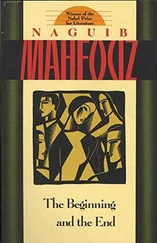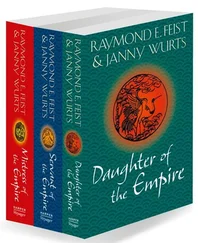Chalmers Johnson - The Sorrows of Empire - Militarism, Secrecy, and the End of the Republic
Здесь есть возможность читать онлайн «Chalmers Johnson - The Sorrows of Empire - Militarism, Secrecy, and the End of the Republic» весь текст электронной книги совершенно бесплатно (целиком полную версию без сокращений). В некоторых случаях можно слушать аудио, скачать через торрент в формате fb2 и присутствует краткое содержание. Год выпуска: 2003, ISBN: 2003, Издательство: Macmillan, Жанр: Старинная литература, на английском языке. Описание произведения, (предисловие) а так же отзывы посетителей доступны на портале библиотеки ЛибКат.
- Название:The Sorrows of Empire: Militarism, Secrecy, and the End of the Republic
- Автор:
- Издательство:Macmillan
- Жанр:
- Год:2003
- ISBN:9780805077971
- Рейтинг книги:4 / 5. Голосов: 1
-
Избранное:Добавить в избранное
- Отзывы:
-
Ваша оценка:
- 80
- 1
- 2
- 3
- 4
- 5
The Sorrows of Empire: Militarism, Secrecy, and the End of the Republic: краткое содержание, описание и аннотация
Предлагаем к чтению аннотацию, описание, краткое содержание или предисловие (зависит от того, что написал сам автор книги «The Sorrows of Empire: Militarism, Secrecy, and the End of the Republic»). Если вы не нашли необходимую информацию о книге — напишите в комментариях, мы постараемся отыскать её.
The Sorrows of Empire: Militarism, Secrecy, and the End of the Republic — читать онлайн бесплатно полную книгу (весь текст) целиком
Ниже представлен текст книги, разбитый по страницам. Система сохранения места последней прочитанной страницы, позволяет с удобством читать онлайн бесплатно книгу «The Sorrows of Empire: Militarism, Secrecy, and the End of the Republic», без необходимости каждый раз заново искать на чём Вы остановились. Поставьте закладку, и сможете в любой момент перейти на страницу, на которой закончили чтение.
Интервал:
Закладка:
In 1996, the American press discovered that between 1982 and 1991 the SOA adopted as textbooks seven different Spanish-language manuals based on a U.S. Army original that called for “neutralizing [i.e., killing] government officials, political leaders, and members of the infrastructure.” These manuals were distributed to thousands of military officers in eleven South and Central American countries. According to a Pentagon spokesman, Lieutenant Colonel Arne Owens, “The problem was discovered in 1992, properly reported, and fixed.” 9WHISC remains the focus of a widespread protest movement led by Father Roy Bourgeois, a former navy officer who is today a Maryknoll priest. He has been arrested many times at Fort Benning. Should he and his supporters ever succeed in closing down the school on U.S. soil, the Bush administration has announced backup plans for a successor in Costa Rica.
The rich rival of the State Department’s IMET program is the Pentagon’s Foreign Military Financing (FMF), which gives money to countries to buy American weapons and then supplies training in how to use them. Appropriations for IMET in fiscal year 2001 were $57,875,000, with proposed expenditures for 2003 of $80,000,000—whereas the FMF appropriations are in the billions and still rising. In 2001, the Pentagon received $3,576,240,000 and promptly put in a request of $4,107,200,000 for 2003. Such differences between the two programs reflect the fact that the Pentagon’s budget is almost twenty times larger than the State Department’s. A major portion of the Pentagon’s funds traditionally goes to Israel, but the biggest proposed recipients in the FMF 2003 budget were Jordan, at $198 million (plus IMET of $2.4 million); Colombia at $98 million (IMET of $1.2 million); India at $50 million (IMET of $1 million); Pakistan at $50 million (IMET of $1 million); Turkey at $17.5 million (IMET of $350,000); and Uzbekistan at $8.75 million (IMET of $1.2 million). These sums represented the first FMF payments to Colombia, India, and Pakistan in recent years. Uzbekistan, which has one of the worst human rights records anywhere, is a new recipient. The Department of Defense at first proposed that Azerbaijan also receive an IMET grant of $750,000 and a FMF grant of $3 million in 2003 as part of the war on terrorism but later admitted that the funds were actually intended to protect U.S. access to oil in and around the Caspian Sea.
One other Department of Defense training program was created primarily to deceive Congress. From 1950 until November 1991, when the Indonesian army opened fire on and killed 270 unarmed demonstrators in the city of Dili, the capital of East Timor, the government paid for the training of over 7,300 Indonesian officers. After it was discovered that American-trained troops firing American-supplied weapons had carried out the Dili massacre, Congress banned all further military funds to Indonesia. The following year the Pentagon set up a new program, Joint Combined Exchange Training (JCET), which sends Special Forces to various countries allegedly to learn local languages and gain “familiarity” with the local military. It was, however, designed largely to keep military relationships with Indonesia on course. From 1992 to May 1998, without informing Congress, Special Forces units carried out thirty-six training exercises with Indonesian special forces units under cover of JCET.
In 1999, after East Timor gained its independence through a United Nations-sponsored referendum, militias under Indonesian military guidance pursued a relentless campaign of “ethnic cleansing” against the island’s civilian population. This time the Clinton administration instituted a ban on all forms of military assistance to Indonesia, a ban still in effect at the time of the September 11, 2001, terrorist attacks. In December 2001, the Pentagon inserted a clause into the Defense Appropriations Act establishing a new “Regional Counter-Terrorism Defense Fellowship Program,” worth $17.9 million. Completely independent of IMET, FMF, and JCET, this program now brings Indonesian military officers to the United States for training. The Pentagon uses several other practices to evade congressional restrictions on its relations with foreign militaries, evidence of a mind-set consistent with militarism.
Reminiscent as all this may be of British imperial practices, U.S. military officers may not recall the underside of such training programs—the Sepoy Mutiny. This massive rebellion lasted almost a year from the first outbreak at Meerut on May 10, 1857, until March 1858, when the siege of Lucknow was lifted. For a short period, the mutineers even captured the capital of the British Raj, Delhi. It was one of the few instances in modern history of a genuine clash of civilizations. The British in India had come to think of themselves as a master race and looked down on the native Indians, both Hindu and Muslim, serving in the British army. They even sent Christian missionaries among the troops to try to convert them. In 1857, when the British introduced one of the earliest versions of the Enfield rifle, the bullets came soaked in grease made from animal fat, including fat from cows and pigs. Cows are sacred to Hindus; pigs are repulsive to Muslims. One of the idiosyncrasies of the ammunition for this particular rifle was that a twist of paper attached at one end had to be bitten off before the gun could be used. 10Rumors quickly spread among the sepoys that the British were trying to humiliate them by forcing them to violate religious taboos. So when one British commander ordered his troops to bite the bullet, a soldier shot him.
The revolt spread like an eruption through the Indian army, and the British struck back with savage brutality. Captured sepoys were bayoneted or sewn into the hides of pigs or cows and fired from cannons. Much as when the Roman Republic suppressed the Spartacist revolt, the road from Kanpur to Allahabad was lined with the corpses of Indian soldiers who had been hanged. England ended the authority of the East India Company, which had employed the sepoys and their officers, and for the next ninety years ruled the country directly as a crown colony. The Indian regiments were abolished and their soldiers absorbed into larger formations that included Englishmen. The operation of artillery was restricted to British soldiers only. With these changes, the British in effect gave up their role as merchants in India and became the unwelcome occupiers of a hostile land.
Something similar happened to the Americans in Afghanistan. Between 1979 and 1989, the CIA supplied mujahideen (“freedom fighter”) groups with over $2 billion worth of light weapons, including Stinger antiaircraft missile launchers, and offered instruction in how to use them against the Soviet forces occupying Afghanistan. The Americans were uninterested in the religious beliefs, political loyalties, or attitudes toward the West of those they were recruiting, training, and arming. 11Once the Soviet Union was defeated, the Americans abandoned Afghanistan to its fate and the Afghan freedom fighters, mainly Islamic fundamentalists, turned against the United States. The deployment of thousands of American military forces to Saudi Arabia, site of Islam’s two most sacred sites, and support for Israel only increased their resentment. Muslim militants retaliated throughout the 1990s, attacking New York’s World Trade Center in 1993, U.S. military apartment towers in Saudi Arabia in 1996, American embassies in Kenya and Tanzania in 1998, and the navy destroyer USS Cole in 2000. It is possible to think of the suicidal attacks of September 11 as a contemporary version of the Sepoy Mutiny—even though the Bush administration has done everything in its power to ensure that Americans do not think such things.
America’s military trains and equips its sepoys directly, but increasingly it also does so through private companies beyond the knowledge and control of Congress. The top thirty-five of these private military companies are among the most profitable businesses in the country today. The main ones are Vinnell Corporation; Military Professional Resources, Inc., best known by its acronym, MPRI, located in Alexandria, Virginia, and owned by L3 Communications; Kellogg Brown & Root, the legendary Texas company that bankrolled Lyndon Johnson’s political career and is today a subsidiary of the Halliburton Corporation; Dyn-Corp of Reston, Virginia, which became notorious during the late 1990s when it was discovered that some of its employees in Bosnia were keeping underaged women as sex slaves and then selling them elsewhere in Europe (DynCorp simply fired these employees); Science Applications International Corporation (SAIC) of San Diego, whose top five executives made between $825,000 and $1.8 million in salaries in 2001 and held more than $1.5 million worth of stock options each; BDM International of Fairfax, Virginia; Armor Holdings of Jacksonville, Florida; Cubic Applications, Inc., of San Diego; DFI International (originally Defense Forecasts, Inc.) of Washington, DC; and International Charter, Inc., of Oregon. 12
Читать дальшеИнтервал:
Закладка:
Похожие книги на «The Sorrows of Empire: Militarism, Secrecy, and the End of the Republic»
Представляем Вашему вниманию похожие книги на «The Sorrows of Empire: Militarism, Secrecy, and the End of the Republic» списком для выбора. Мы отобрали схожую по названию и смыслу литературу в надежде предоставить читателям больше вариантов отыскать новые, интересные, ещё непрочитанные произведения.
Обсуждение, отзывы о книге «The Sorrows of Empire: Militarism, Secrecy, and the End of the Republic» и просто собственные мнения читателей. Оставьте ваши комментарии, напишите, что Вы думаете о произведении, его смысле или главных героях. Укажите что конкретно понравилось, а что нет, и почему Вы так считаете.











